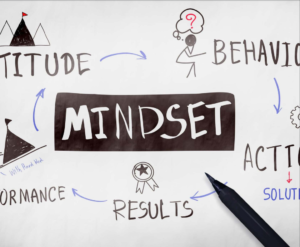Table of Contents
As a parent or teacher, you’re deeply invested in your child’s school success. So, you’re wondering how to give your child a boost in school? It’s not just about helping with homework, there’s more to it. Spark a love for discovery in them, and they’ll surge ahead with the condence that comes from being well-equipped. Your child’s educational journey hinges on a single, essential factor: recognizing and responding to their unique strengths, abilities, and needs. Struggling to help your child keep up in school? Cut through the frustration with this refreshingly clear guide, designed to equip parents with the know-how and tools they need to support their kids every step of the way, from elementary to high school. From setting up a productive study space to communicating effectively with their teachers, we’ll cover it all. Raising a successful student is a joint effort. When parents and teachers collaborate during conferences, they’re better equipped to address strengths, weaknesses, and everything in between.

UNDERSTANDING YOUR CHILD’S LEARNING NEEDS
Every child learns differently. Some are visual, auditory, kinesthetic learners, while others prefer hands-on experiences. Once the school year starts recognizing your child’s learning style is the first step toward personalized support and to a great start to the school year. What is dyslexia and how can recognizing the symptoms early affect outcomes? Does your child excel at visual tasks or prefer listening? Do they learn best by doing, or do they gravitate toward reading and writing? Once you’ve got a handle on their strengths, you can fine-tune your learning strategy to fit their needs. You can encourage similar techniques in the school environment, and support your child’s growth socially.

ASSESSING STRENGTHS AND WEAKNESSES
Look closely at your child’s report card and teacher feedback. Certain patterns will emerge that’ll show you what your child is naturally good at and what areas they struggle with. Little learning assignments at home, like solving puzzles or understanding what they read, can be super helpful. Casual chats about their coursework can unveil the techniques they use to tackle obstacles. The way your child interprets and retains knowledge becomes clear in these conversations.

SETTING REALISTIC GOALS
As the year starts and it is a new grade level it is important to establish goals. Once you understand your child’s abilities and preferences, set attainable goals. Tailor these goals to your childʼs learning speed and progress. Collaborate with your child. Talk to them, and engage them in the goal-setting process. Make sure they agree with the academic objectives. Talk with the parent liaison for additional guidance if needed.

HOW CAN I SUPPORT MY CHILD IMPROVE IN SCHOOL: BUILDING STRONG STUDY HABITS
Even with the best intentions, many students struggle with effective study habits. Modern life is like a supercharged cocktail of distractions – it’s a wonder we get anything done. What happens when you put these strategies into practice? You’ll establish a solid routine, zone in on what matters, and find the drive to keep pushing forward. These techniques also answer questions many parents ask like, “How can I support my child improve in school, and create a better study environment by removing distractions?”

CREATING A PRODUCTIVE STUDY SPACE
A designated, clutter-free study space is essential. It should be quiet and stocked with supplies. Add some essentials to your stack: notebooks, pencils, and maybe even a trusty whiteboard for good measure. What if you could silence the noise and dig in, distraction-free? It’s possible. With distractions at bay, your child can now fix their attention on their work, lodging new concepts firmly in their mind. Pinpoint a quiet, comfortable spot for homework, and your child will be more likely to develop a rock-solid study routine that sticks.

SET A STUDY SCHEDULE AND STICK TO IT – CONSISTENCY IS THE SECRET SAUCE TO MAKING PROGRESS
The missing piece to your child’s academic puzzle may be as straightforward as establishing a daily study routine, which forges vital character traits like determination, adaptability, and self-motivation – the qualities that drive them to succeed in the long run. Allocate a chunk of each day to studying, and you’ll be amazed at how it clears the mental clutter, frees up time, and reduces those pesky assignment squabbles.

BOOSTING ACADEMIC SUCCESS IS WITHIN REACH WHEN YOU TEACH HIGHLY EFFECTIVE STUDY TECHNIQUES THAT RESONATE WITH LEARNERS
Teach your child effective study habits and watch their academic confidence soar. These essential skills will help them absorb and recall information with ease, paving the way for long-term success. Choosing the right tools and strategies can help them engage actively with the material, rather than passively reviewing it.
1. Active Recall
Active recall involves actively trying to retrieve information from memory rather than simply rereading or highlighting notes. When you challenge your brain to remember, you spark a remarkable process: neural connections strengthen, and your capacity for recall expands. To encourage active recall, you might suggest that your child closes their notes after reading a section and tries to summarize what they remember aloud or in writing. Flashcards are an excellent tool for active recall as well—they prompt students to remember information without seeing it right away. At your child’s school active recall is practiced which can help them grow socially and academically.
2. Learning new things is all about the timing, and Spaced Repetition is the ultimate timing expert. By cleverly spacing out review sessions, you’ll coax even the trickiest concepts into your long-term memory, where they’ll stay put
Spaced repetition is a technique that involves reviewing information at gradually increasing intervals over time, helping to move information from short-term to long-term memory. Digital flashcard apps, like Anki or Quizlet, often have built-in spaced repetition features that make it easier to apply this method to a wide range of subjects. Imagine your child sailing through the school year, confidently recalling facts and concepts without breaking a sweat. It’s possible – and it starts with regularly scheduled review sessions.
3. SQ3R Method
The SQ3R method Survey, Question, Read, Recite, Review) is a structured approach to reading comprehension. Start by having your child Survey the material, scanning titles, headings, and key points. Ask them to put on their thinking caps and come up with questions that seek out answers in the material. As they Read, they can look for answers to these questions. After reading, they should Recite what they’ve learned in their own words, summarizing the main points. To wrap things up, they go back over the main points. To truly understand the nuances of history or literature, it’s essential to slow down and soak up each detail – a step-by-step method encourages exactly this kind of thoughtful engagement.
4. Learn by doing – try drilling with flashcards and practice quizzes to gauge your progress
Actively engaging with your study materials is so much easier when you’ve got a dependable study aid like flashcards and practice quizzes on your side. These regular check-ins help students pinpoint what they’ve got down pat and what needs a bit more attention, refining their understanding with each attempt. When using flashcards, encourage your child to engage fully by answering each question aloud or writing the answer on a blank piece of paper before checking the answer. Tame your test-day nerves by running through practice quizzes, either on the web or via a handy app. By putting yourself in the actual test environment, you’ll get a feel for the real deal and arrive at the testing site feeling mighty prepared.
5. Accessing Classroom Resources
Finally, it can be incredibly beneficial to collaborate with your childʼs teachers to access a “strategy library” of resources specific to their classroom needs. Many teachers have collections of worksheets, study guides, and digital resources that align with classroom goals and can reinforce the learning happening at home. Sometimes, the biggest hurdles in education can be overcome with a little expert guidance. That’s where your child’s teachers come in – by working together, you can develop a custom approach that honors their unique strengths and learning preferences. What if your child had a set of tricks up their sleeve to tackle schoolwork with confidence? By incorporating these strategies, they’ll be able to break free from dependency and become masters of their own learning process.

DIRECT INSTRUCTION FOR PARENTS
Parental guidance isn’t limited to study time. Many learning opportunities arise naturally in everyday life. In the most ordinary of tasks, like cooking from a recipe, we can stumble upon profound lessons.
Stuck on how to help your kid thrive in school beyond the confines of a tutor’s guidance? The solution might be closer than you think – try building learning into everyday activities. You’ll start to notice that the concepts you learned in class have tangible uses outside of the classroom, and these activities will show you how.

EXPLICIT INSTRUCTION FOR HOMEWORK
“I do, we do, you do”
While learning often occurs organically, incorporating structured practice into everyday tasks can reinforce essential academic skills. With the “I do, we do, you do” strategy, you can foster a learning environment that builds confidence and culminates in successful homework assignments and projects, all while progressively empowering students to take the reins.
Hereʼs how to apply it effectively:
1. Model the Process (“I do”)
Start by demonstrating the task or skill yourself. For instance, if the homework involves solving math problems, work through a problem out loud, explaining each step along the way. Similarly, if the assignment is a writing task, show how to brainstorm ideas, organize thoughts, or construct sentences. Think aloud to share your thought process, highlighting problem-solving strategies, planning techniques, or any other helpful insights. This models both the steps and mindset needed for the task.
2. Guided Practice (“We do”)
Once youʼve modeled the task, work through another example with them. Engage your child by prompting them to think through each step with you. Ask guiding questions to encourage them to participate actively while you provide support, such as, “What do you think comes next?” or “How should we start this part?” This phase reinforces understanding while still offering the support they need. Clear up any confusion, and swap in winning strategies for sticking points – it’s the ideal moment to bolster their self-belief and get them back on track.
3. Independent Practice (“You do”)
After sufficient practice together, encourage them to try a similar task on their own. Give them space to work independently while reminding them youʼre available if they get stuck. It’s a liberating feeling, being let loose to tackle problems and explore solutions without a safety net – and that’s exactly what they get to do. Acknowledge their efforts and review their work afterward, providing gentle feedback to reinforce their learning.
4. Break Down Complex Tasks
For larger projects or assignments, help them break down the task into smaller, manageable parts. For example, if they have a research project, create mini-goals such as choosing a topic, gathering sources, outlining, and drafting. Imagine hitting a series of small home runs rather than trying to tackle a behemoth task. That’s what setting smaller milestones can do – keep you on track, minimize stress, and keep motivation high. One trick is to create a milestone list, ticking off each achievement as they reach it, to stay motivated and on target.
5. Provide Clear Instructions and Examples
Whenever possible, use examples or templates to illustrate expectations clearly. This might include sample math problems, sentence starters for writing, or a visual outline for projects. With examples that hit close to home, students can essentially see the finish line and align their work with what’s expected.
6. Encourage Reflection
After completing an assignment, encourage them to reflect on what they found challenging or what they learned. What this does is let kids map their growth, absorb life’s knocks, and steadily forge a healthy sense of self – building blocks for facing any hurdle that comes their way.
With these well-planned steps, you can engineer a homework experience that’s not only manageable but also genuinely enjoyable for your child – now that’s a win-win!
WHAT DOES IT TAKE TO TURN A STRANGER TO A SUBJECT INTO A CONFIDENT PRO? EFFECTIVE PRACTICE TECHNIQUES HOLD THE ANSWER
When homework starts to feel overwhelming, support steps in to help kids connect the dots and really understand the material, making the school year a whole lot more manageable. Begin with explicit instruction by clearly explaining the concept or skill in small, manageable steps. For example, break down the problem or assignment into parts, and model each step of the process out loud. Use language that is easy to understand, and connect new information to what your child already knows to build confidence.
Once your child has a basic understanding, engage in guided practice together. This means working through examples as a team, gradually releasing responsibility as your child gains confidence. When you ask probing questions like “What’s the missing piece here?” or “Can you explain your thought process?”, you’re not just assessing their knowledge – you’re priming them to become resourceful problem-solvers. This skill-building approach breeds a sense of accountability, helping them zero in on solutions that stick. When you resist the urge to spoon-feed your child the answers, they develop a stronger grasp of the material and learn to bounce back from setbacks.
Math, science, reading, and writing – no matter the subject, this type of guided support can seriously elevate student performance. It is especially helpful for students who are or English language learners ELLs. Guided practice becomes a springboard for ELL students to transition from merely understanding new concepts to actively using them, surrounding themselves with a web of language and academic proficiency.
FEEDBACK AND ENCOURAGEMENT
Provide thoughtful feedback that doesn’t discourage your child. Acknowledge and celebrate their effort. Shift your spotlight from the end result to the journey that got you there. Cheer on your own hard work and perseverance.
Confidence gets a supercharge when we focus on the positive. It’s a powerhouse combo that drives motivation. This helps build a backbone of strength, so you’re better prepared to tackle the tests of school and life.
Make a special place to post school support and accomplishments to show your child how much you appreciate their hard work and dedication. Try social phone calls, to connect with other parents and share successful parent-teacher conference tips.
WE’RE TALKING SOLID SKILLS IN READING, WRITING, AND MATH, LASER-LIKE FOCUS, AND ENOUGH TIME MANAGEMENT SAVVY TO GET EVERYTHING DONE WITH ROOM TO SPARE
Kids need to learn how to prioritize tasks and make the most of their time – it’s a vital life skill. To stay on track, identify your top priorities and make time for the rest – harmony is the goal. Helping your child improve in school and stay focused is a top priority for many parents. But did you know that’s exactly what executive functioning skills are designed to do? These are the kind of issues that sometimes arise in successful parent-teacher conferences and you might get help at the resource library.

ENCOURAGING DAILY READING
Make reading enjoyable. Identification is key – pick books that mirror your child’s zest for life. Browse shelves side by side, and get lost in the stacks together. Instead of going solo, make it a fun, communal activity that brings everyone closer. Reading is an area that is included in all subject areas and is encouraged to be a part of homework time.
When we share the experience of reading, good vibes tend to stick to the books themselves. From this point on, a love affair with books begins, becoming an integral part of who you are.

BUILDING VOCABULARY
Use a thesaurus when you encounter new words. Vocabulary growth happens when you go beyond context and start experimenting with new words and their meanings. Encourage your child to use new words in their writing and conversations.
SUPPORTING WRITING SKILLS
Provide outlines or different writing structures. Offer various starting points to spark ideas and help your child organize their thoughts. Nudge them to venture beyond their writing comfort zones and try on different styles for size. Writing provides support in a variety of literacy instruction such as written comprehension, organizing thoughts, elaborating on a topic, English language development, grammar, spelling, and summarizing.
STRENGTHENING MATH AND PROBLEM-SOLVING
Reinforce basic math operations with everyday examples. Slice, dice, and calculate your way to a smart shopper – involve your child in planning and preparing meals. Discuss how quantities add up.
Let’s face it: math isn’t just for brainiacs or scientists. It’s for anyone who’s ever had to measure a room, comparison-shop for groceries, or calculate the best time to leave for the airport. For example, calculating distances or figuring out discounts. However, recognize that not every child is drawn to STEM subjects. Encourage exploration of other areas if their interests lie elsewhere.

BOOSTING FOCUS AND TIME MANAGEMENT
A dedicated study space is a start. The reality is, you can’t simply wake up one day and become a master of time management – it takes coaching and support. Picture your planner as a personal mission control, where you can coordinate projects, social engagements, and even volunteer work.
Assist your child in mapping out a daily routine that covers all the bases. Include time for academics, hobbies, rest, and social activities. Ensure they have adequate sleep, as this is crucial for memory and attention.
Break down large goals into smaller milestones. Remind your child that intelligence is a skill that can be developed.

COMMUNICATING WITH TEACHERS AND SCHOOLS
Regular communication with your childʼs teachers is essential, especially if your child needs support in a particular subject. Foster a habit of asking questions and addressing concerns with teachers and school staff – it can make all the difference in heading off problems before they snowball. If a language barrier exists, seek a bilingual friend or other resources within the school to ensure effective communication and foster a positive school environment. Be aware if you feel uncomfortable speaking English or feel your child is uncomfortable speaking English as you address your concerns.

EFFECTIVE PARENT-TEACHER COMMUNICATION
Attend parent-teacher conferences and stay in touch with your child’s teacher(s). When you take an active role in your child’s education, you’re saying loud and clear that their academic success is a top priority. Leaving your schedule open during a regular time to meet face-to-face with the teacher can offer parents support. The feel of meeting in person provides a different style of communication and establishing a partnership in your children(s) learning.
Say goodbye to surprises when you cultivate an open dialogue – it’s how you catch potential roadblocks before they become major headaches. You’ll be able to work side by side with teachers, figuring out how to give students the help they need.

MONITORING PROGRESS
Track report cards and grades over time. Look for trends in improvement or areas where your child may be struggling.
Imagine being able to swoop in and offer support the moment your child needs it – that’s exactly what our ongoing monitoring enables, providing a clear view of their academic progress and alerting you to potential roadblocks. Learn, adjust, and propel forward – that’s the power of regular check-ins, where growth and progress wait around every corner. Be sure to review parent resources offered by Colorín Colorado, which supports language learners and English language learners .
ADVOCATING FOR YOUR CHILD
Some students might need a helping hand, whether that’s extra academic support, accommodations for a learning disability, or simply a closer look at how they learn best. Don’t hesitate to seek additional resources or special services if needed. Be aware if problems develop or you receive extra communications from the school staff, teachers, or childʼs teachers. If your child has problems learning that is a reason to contact the school, speak to your child, talk to the school and understand what school support or parent resources may be available. Use the school resource library and its classroom strategy library to the utmost. Ways parents can support school success include active participation and a willingness to work with school personnel.
As a parent, you are your child’s biggest advocate. If your child is struggling despite their efforts, they may have additional needs.

ENCOURAGING A GROWTH MINDSET
Grades don’t fully reflect your child’s abilities and effort. Focusing solely on grades can make learning feel like a chore. Encourage a growth mindset. Put simply, trying hard and embracing setbacks is vital – it’s how we grow, after all. Acknowledge every triumph, no matter the size, and let the sense of accomplishment shine. Help your child to talk with the teachers frequently, but donʼt pressure your child. Make time for passions and free-time exploration. As your child grows, this lays the groundwork for a curiosity that followed them long after the school bell rings.
TIME TO SUM IT UP – WE’VE GOT THE SUMMARY AND NOW IT’S TIME TO EXTRACT THE REAL SIGNIFICANCE
Acorns of learning grow into mighty trees of knowledge, and supporting your child’s educational adventure is about cultivating more than just report-card perfection. Foster their individual strengths and guide them in building the expertise they need to really shine.
My kid’s school struggles have me worried – what can I do to help them catch up and stay on top of their schoolwork? From the earliest stages, we nurture curiosity, enthusiasm, and a growth mindset – the building blocks of a continuous learning journey.
Raising a successful child requires more than just love and support – it takes a solid game plan. That’s exactly what this guide provides. A child who loves to learn is a child who will go far. By instilling this passion in your little one, you’ll set the stage for a lifelong journey of discovery and growth that can take them to incredible heights.


